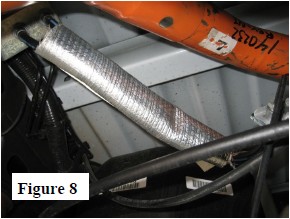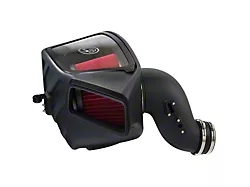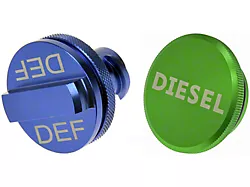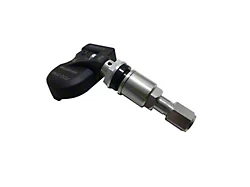Guaranteed Free Delivery by 12/24! available on most items - Details
How to Install Borla Touring Cat-Back Exhaust - Split Rear Exit on your Sierra
Tools Required
- 3/8” Drive Ratchet
- 3/8” Drive Extension 3”
- 10mm Socket
- Torx socket
- Pry Bar
- Spray Lubricant

Shop Parts in this Guide
- Borla Touring Dual Exhaust System with Polished Tips; Side Exit (07-13 4.8L Sierra 1500)
- Borla Touring Dual Exhaust System with Polished Tips; Side Exit (07-13 5.3L Sierra 1500)
- Borla Touring Dual Exhaust System with Polished Tips; Side Exit (07-09 6.0L Sierra 1500, Excluding Hybrid)
- Borla Touring Dual Exhaust System with Polished Tips; Rear Exit (07-13 4.8L Sierra 1500)
- Borla Touring Dual Exhaust System with Polished Tips; Rear Exit (07-13 5.3L Sierra 1500)
- Borla Touring Dual Exhaust System with Polished Tips; Rear Exit (07-09 6.0L Sierra 1500, Excluding Hybrid)

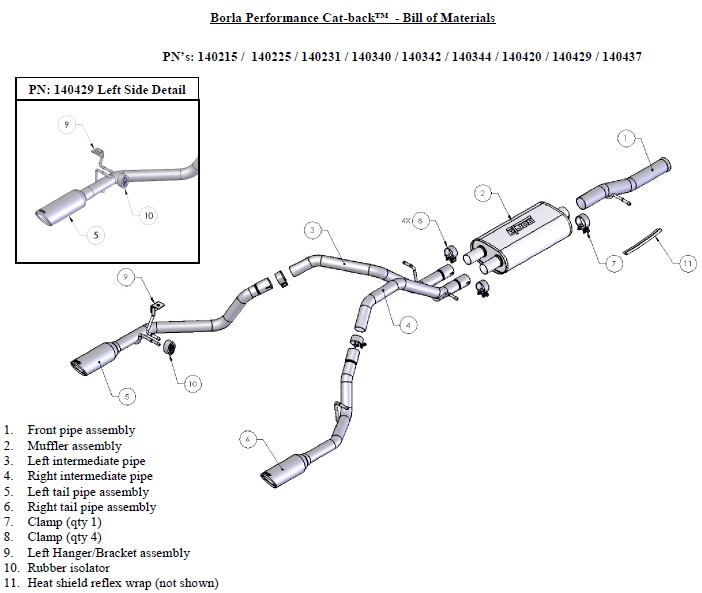
Caution!!! Never work on a hot exhaust system. Serious injury in the form of burns can result If the vehicle has been in use and the exhaust system is hot, allow vehicle to cool for at least 1 hour. Always wear eye protection when working under any vehicle.
Note: It is our recommendation that you use a hoist or hydraulic lift to facilitate the installation of your new Borla Performance Rear Section Exhaust System.
Taking all under car safety precautions, lift the vehicle using a hoist or hydraulic lift. Once this has been done, you may begin the removal of your old exhaust system from your vehicle.
Note: Before removing the original exhaust system from your vehicle, please compare the parts you have received with the bill of materials provided on the previous page to assure that you have all the parts necessary for the installation of your new Borla Performance Rear Section Exhaust System.
Original Exhaust System Removal
Note: With a used vehicle, we suggest a penetrating spray lubricant to be applied liberally to all exhaust fasteners and allowing a significant period of time for the chemical to lubricate the threads before attempting to disassemble.
1. Cut the factory exhaust anywhere in between the muffler and the cross member as shown in (figure 1).
2. Lubricate all hangers and rubber isolators.
3. Using a muffler stand or an additional person to hold the ex-haust up into position, remove the hangers from the rubber iso-lators and remove exhaust from the vehicle as shown (figure 2).
4. Unbolt the flange/clamp located just after the catalytic con-verters and remove the remaining exhaust as shown (figure 3) from the vehicle. Place the hardware to the side for use during the installation of your new exhaust system.
Warning: Use extreme caution during installation. Torque all fasteners according to manufacturer’s torque values and tightening sequence. DO NOT use air impact tools to tighten fasteners on Borla Performance Exhaust Systems. Use of such tools may result in bent flanges or gasket contact areas leading to exhaust leaks.
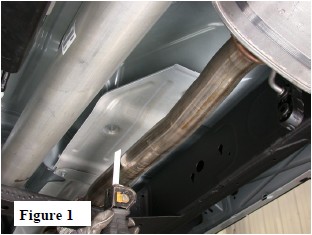
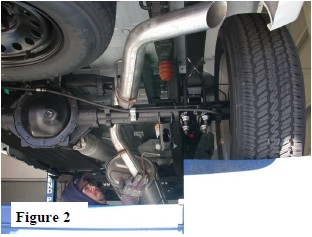
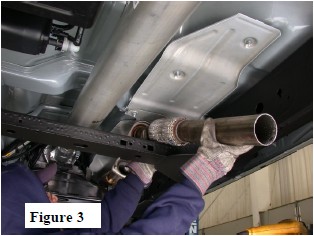
Borla Performance Cat-Back™ Exhaust System Installation
1. Using the original hardware, place the front pipe assembly into position mak-ing sure to install the hanger into the rubber isolator. Hand tighten the flange for now (figure 4).
2. Place a clamp over the expanded end of the muffler assembly and set it into position as shown (figure 5). Do Not tighten the clamp.
3. Place a clamp over the expanded end of both left and right intermediate pipes and set them into position as shown (figure 6) making sure to install the hangers into the rubber isolators. Do Not tighten the clamps.
4. Install the hanger/bracket assembly on driver side frame rail located at the rear of vehicle as shown in (figure 7). Install the rubber isolator onto the hanger/ bracket assembly.
5. Place a clamp over the expanded ends of both left and right tail pipe assem-blies and set them into position making sure to install the hangers into the rubber isolators. Do Not tighten the clamps.
6. Install the supplied heat shield reflex wrap to the brake lines over axle as shown (figure 8).
7. Check your exhaust system for proper clearance under the vehicle and also for tip alignment.
8. Once position has been determined to be correct, tighten the flange hardware to 18-22 ft. lbs. and the Accuseal clamps to 32-35 ft. lbs. making sure the clamp opening is not over any of the notches in the pipe.
9. Before starting your vehicle, make sure to check all wires, hoses, brake lines, body parts and tires for safe clearance from the exhaust system.
10. Start vehicle and check for any leaks. If any leaks are found, determine cause (such as loose or incorrectly positioned clamp) and repair as necessary.
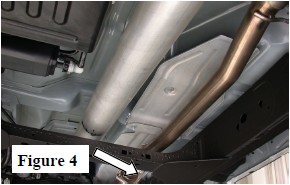
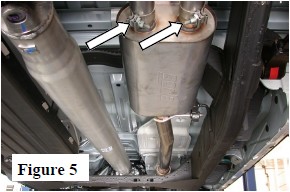
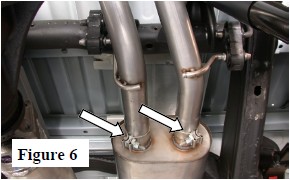
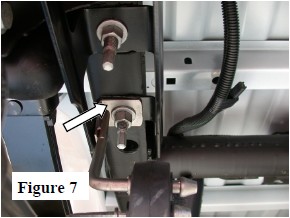
Note: When you first start your vehicle after the installa-tion of your new Borla Performance Exhaust System, there may be some smoke and fumes coming from the system. This is a protective oil based coating used in the manufacturing of mandrel bent performance ex-haust tubing. This is not a problem and will disappear within a very short period of time after the exhaust has reached normal operating temperatures.
